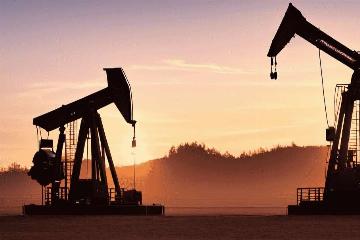Oil Prices Plunge!
Advertisements
In recent months, we have witnessed a dramatic decline in global oil prices, with New York crude dipping below the $20 mark even against the backdrop of production cutsReports from industry experts reveal that in certain regions of Canada, crude oil prices have plummeted to the point of going negative; some producers are willing to incur transportation costs just to get their oil off their handsThe overarching trend in crude oil prices can be summarized in one word: weak.
Amidst this turmoil, an intriguing phenomenon has emerged—liquefied petroleum gas (LPG) prices are on the riseMany find this puzzling and may even conclude that dropping oil prices provide an ideal environment to short liquid petroleum gasHowever, such a conclusion is fraught with risk.
To understand this situation better, it’s imperative to clarify the distinctions between natural gas, liquefied petroleum gas, and coal gas
Advertisements
In China, the market is dominated by liquefied petroleum gas (LPG), which is substantially different from liquefied natural gas (LNG).
LPG is a byproduct generated during the catalytic and thermal cracking of crude oil in refineriesIts energy content stands at approximately 26,000 kcal per cubic meterA significant portion of LPG also comes from associated gas in oil fields, which accounts for around 60% of the supply; however, China largely depends on refinery byproducts for its LPGOn the other hand, natural gas refers to a methane-rich gas extracted from gas fields, having a lower energy value of about 9,227 kcal per cubic meterWhen this natural gas is liquefied, it is classified as LNGCoal gas is derived from the carbonization of coal and includes several variants such as coke oven gas and water gas, with Beijing's coal-to-pipeline gas yielding an energy value of about 4,000 kcal per cubic meter.
When examining the supply and demand dynamics of LPG, it is essential to recognize that LPG is primarily supplied through domestic production and imports
Advertisements
Domestic LPG mainly derives from refinery byproducts, while imported LPG chiefly consists of byproducts from gas fieldsThis connection means that LPG supply is closely tied to crude oil consumption; for example, during the pandemic, the substantial decline in refined oil demand led to a decreased operational capacity in oil extraction and refining facilities, resulting in a contraction of LPG supply.
On the demand side, LPG is predominantly consumed in urban areas, restaurants, and rural locationsAlthough restaurant consumption plummeted due to social distancing measures, the usage in rural and urban households saw a riseFood consumption remains a rigid necessity; thus, while overall demand decreased, the impact on LPG was less significant compared to refined oil.
Currently, as China resumes industrial operations, the food service industry is experiencing a robust recovery—indeed, it has been termed explosive growth
Advertisements
Even though market forecasts may suggest a downturn in other consumption areas, the enduring necessity of food services means that LPG demand is rapidly bouncing back.
Some observers note that because a significant portion of LPG production costs is linked to crude oil pricing, decreasing oil prices should, in theory, drive LPG costs down as wellThis notion, however, reflects a fundamental misunderstanding; prices are dictated more by supply and demand dynamics rather than merely by costs.
Additionally, China’s LPG industry is characterized by strong monopolistic tendencies, primarily controlled by state-owned oil and gas enterprises which hold considerable pricing powerMuch like the set floor price for refined oil at $40, although LPG may not have a fixed floor price, short-term price controls are likely implemented to maintain relative stability.
Consequently, during the pandemic, despite falling international crude oil prices, LPG prices have risen
- Mercedes-Benz: Embracing a New Era
- Intel Shares Surge 9.5%
- China-U.S. Treasury Yield Differential Holds Steady
- The UK Bond Market May Continue to Suffer
- How High Will U.S. Treasury Yields Soar?
This discrepancy arises chiefly from a decrease in supply that outstripped the slight reduction in demand.
From a long-term perspective, the emergence of the U.Sshale gas revolution in 2016 triggered an oversupply in oil and gas, reflected in declining natural gas pricesYet, the current trajectory of low oil prices has breached the cost barrier for shale oil operations at $40; along with a dramatic worldwide demand reduction, projections for 2020 suggest that oil demand will remain at low levels—potentially below $40 for an extended periodThis situation could dampen production and exploration enthusiasm among U.Sshale oil and gas companies, ultimately leading to a future shortfall in liquefied petroleum gas supply.
Hence, in both the short and long term, LPG appears poised for bullish trends without a substantial basis for sharp declines.
Of course, the ongoing pandemic must not be overlooked
